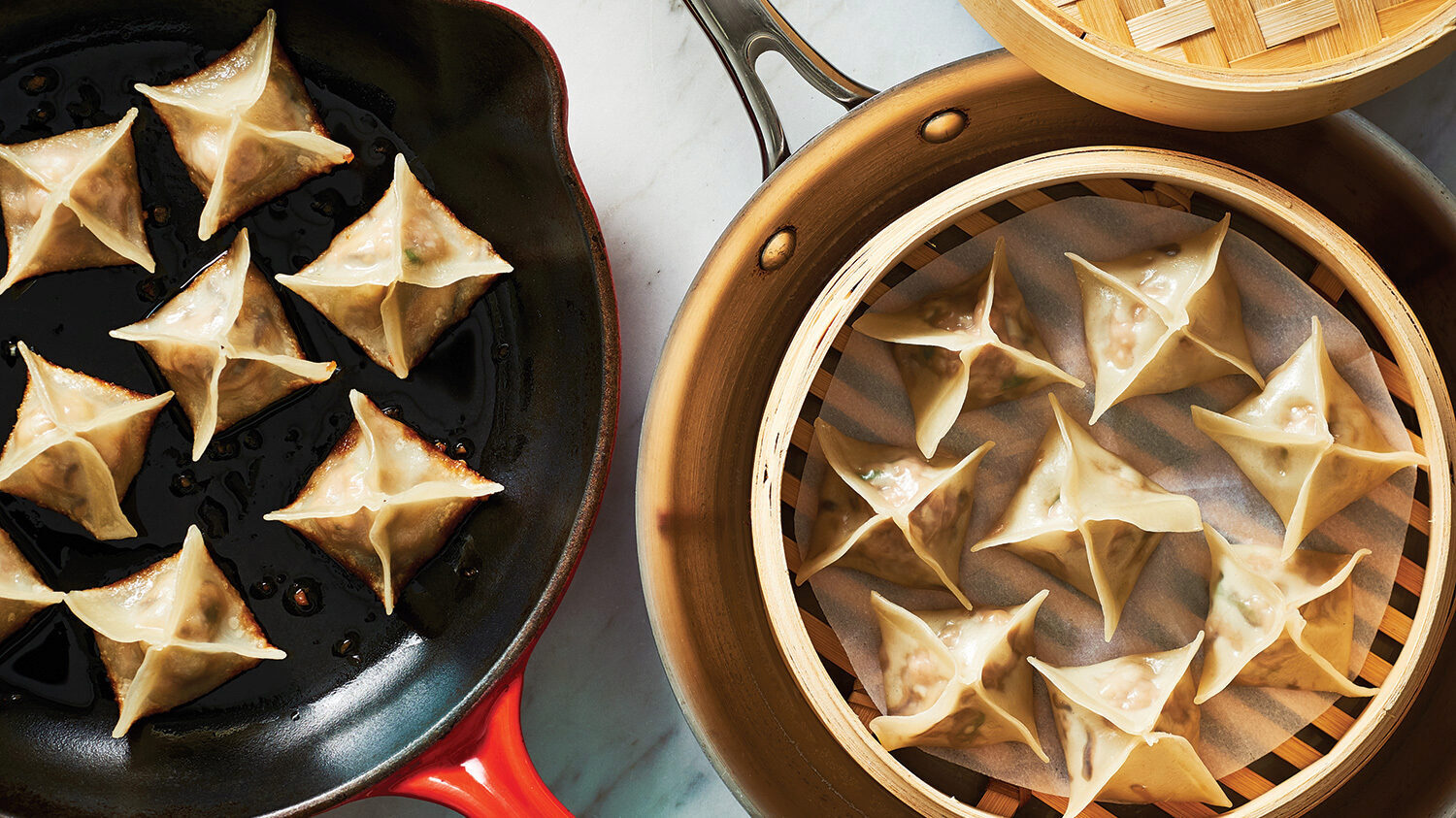If you’re looking for an all-purpose flavour booster to put in your grocery cart, soy sauce is it. This dark seasoning liquid offers a delicious balance of salty and savoury notes, with an appealing tangy edge. Used throughout Asia as a flavour enhancer, it brings out the best in many dishes.
What Is It?
Soy sauce is one of the oldest condiments in the world. It is made by adding a type of mould to cooked soybeans and roasted wheat, and then letting it grow for three days. Salt water is then stirred in, and the mixture goes into barrels, where a type of lactobacillus bacteria is added — the same sort of culture used in making yogourt and kimchi. The soy sauce ferments for anywhere from six months (for most standard supermarket brands) up to several years before the liquid is strained and pasteurized for bottling.
Types
- Most Japanese soy sauce is made from this mixture of wheat and soy. Known as shoyu, it is clear and thin, with a sweeter, gentler flavour than other types. It is an all-purpose choice for dipping sushi or sashimi or making stir-fries, such as Sweet & Spicy Rice Noodles with Broccoli.
- Chinese soy sauce is made using a similar process but with only soybeans. There are two main types: light and dark. The term “light” has nothing to do with the salt content or colour; it’s used to describe the mellow, complex flavour that’s perfect for dishes like our Hot Pot. Surprisingly, dark soy can taste less salty. It goes through a longer fermentation and has a thicker texture and darker colour. Sugar is sometimes added to produce a sauce with a molasses-like quality. Dark soy sauce is used for cooking and in dipping sauces, and it adds delicious flavour to Chinese-Style Pork Dumplings 2 Ways.
- Reduced-sodium soy sauce is made in a similar way as the regular style of sauce. Depending on the brand, it has 25% to 40% less sodium than traditional soy sauce. Its less-salty flavour is ideal for delicate dishes, such as Sesame-Soy Glazed Wild Black Cod or Asian-Style Grilled Salmon Salad.
- Like Chinese soy sauce, tamari is also made solely from soybeans, and it has a similar strong flavour. It is a great option for anyone who is sensitive to wheat. And while most good-quality brands are labelled “gluten-free,” it’s still important to check the label to be sure. Tamari is delicious in robustly flavoured dishes like Sesame Noodles with Kale, Ancient Grains & Tofu.
- For the adventurous, there are many other exciting styles of soy sauce to try, such as Chinese mushroom soy sauce, sweet soy sauce, Japanese white soy sauce and Korean ganjang sauce.
What Does Soy Sauce Add to Dishes?
In cooking, soy sauce seasons food in three different ways. The sauce adds saltiness, the soybeans and wheat contribute savouriness (called “umami” — see below), and the fermentation creates an appealing tang. Most often, soy sauce is used to enhance the flavours of other ingredients, like the meat and vegetables in Pork Bites with Shaved Asparagus Salad. Occasionally, it is a dominant flavour in braised dishes.
Choosing Your Go-To Soy Sauces
You don’t need a cupboard full of different types of soy sauce. A good-quality all-purpose Japanese-style soy sauce should be a regular item on your shopping list. Also keep a Chinese dark soy sauce or tamari on hand for times when you want deeper flavours.
Sidebar: What Is Umami?
Discovered in Japan more than a century ago, the fifth taste is described as “umami” — an appealing savoury deliciousness. Ingredients that are high in the amino acid glutamate, such as oven-roasted tomatoes, Parmesan cheese and dried mushrooms, have this umami quality. So do aged cured meats and fermented foods, such as soy sauce and kimchi.
How to Use Soy Sauce
Soy sauce is very versatile: It can be a condiment, a marinade ingredient or a multi-purpose flavouring. It’s good used at the table, drizzled on steamed rice or vegetables, or served with a dab of wasabi as a dip for sushi or sashimi. Soy sauce has a natural affinity for ingredients like ginger, garlic, rice vinegar, molasses, chilies and sesame oil. It’s a key ingredient in Japanese teriyaki and Korean bulgogi sauces, and is often added to marinades for red meat, like the one in our One-Skillet Pepper Steak with Beans & Greens. It’s also an essential addition to stir-fries and other foods that are cooked quickly in a wok, such as fried rice or Spicy Pork and Spinach Noodles.
A small spoonful of soy sauce is also great for boosting the savoury flavour of burgers and meat loaf, and it adds a nice umami edge to barbecue sauces, gravies and even cocktail sauce for shrimp. Whisk it into a sesame-soy salad dressing or add a few drops to balsamic vinaigrette. It’s front and centre in delicious Ginger Peanut Sauce for fresh Thai spring rolls or chicken satay and it’s the secret to making gorgeous Marbled Tea Eggs to garnish ramen.
Storing
Store an unopened bottle of soy sauce in a cool, dark cupboard away from heat sources. Once opened, keep it in the refrigerator.







